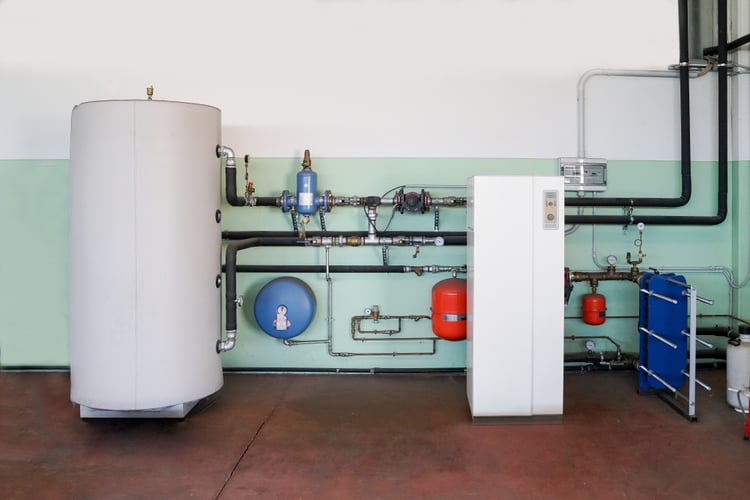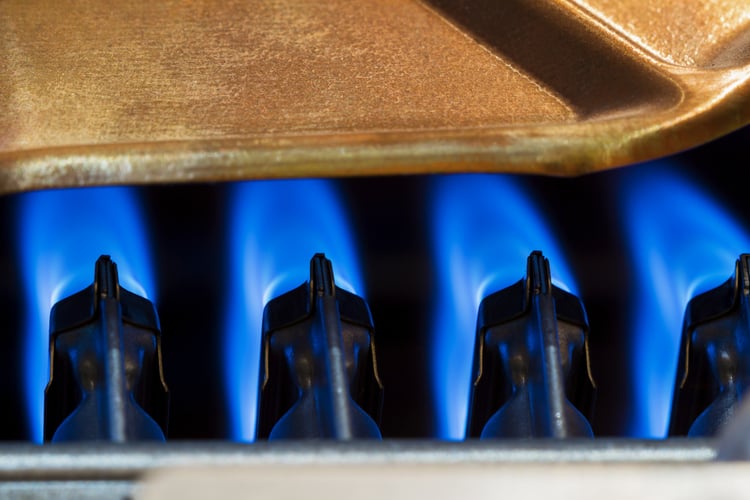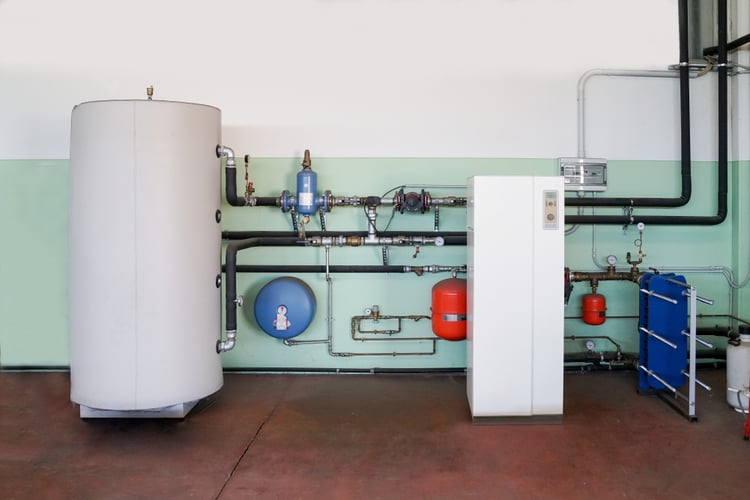Water heating represents a considerable energy expenditure in the construction sector, and especially in multi-family buildings. According to the New York Urban Green Council, hot water systems represent 10% of total energy consumption and 19% of consumption in multifamily buildings.
Traditionally, hot water systems run on natural gas or heating oil, and there is a huge opportunity to reduce emissions by switching to electricity. However, this is only true when the electricity used by heating systems comes from a clean source. Otherwise, emissions will simply be transferred from buildings to power plants.
Reduce your building's emissions with an all-electric hot water system.
Another technical challenge is designing electrical hot water systems that are economically viable for building owners. Resistance heaters are not an option due to their low efficiency, especially in places with high kWh prices like New York. A heat pump is a much better option, reducing electricity consumption by 50% or more compared to a resistance heater of the same capacity.
Choosing an Efficient Heat Pump Water Heater

When comparing water heaters , the most important metric to look at is the energy factor or EF. EF is the ratio between heating output and energy input, which means that a higher value results in lower electricity consumption. To qualify for the ENERGY STAR label, an electric hot water system must meet the following conditions:
- If the capacity is 55 gallons or less, the minimum energy factor is 2.00.
- If the capacity is greater than 55 gallons, the minimum energy factor is 2.20.
An energy factor of 2.00 means the water heater provides 2 units of heat for every unit of electricity consumed. This means that a 55-gallon ENERGY STAR water heater provides at least 6,824 BTU (2 kWh) of water heat for every kWh of electricity consumed. The requirement is even more demanding for water heaters with capacities greater than 55 gallons, which must provide at least 7,506 BTU (2.2 kWh) of heat per kWh consumed.
For comparison, resistance heaters always operate with a power factor below 1.00. This happens because electricity is converted directly into heat, while a heat pump uses a reverse refrigeration cycle to increase its output per kWh. Because of this limitation, there are no resistance heaters that qualify for the ENERGY STAR label. However, a solar-electric hybrid water heater qualifies if the combined solar energy factor (SEF) is at least 1.8.
ENERGY STAR water heaters offer additional benefits beyond their high energy factor. To qualify for the label, electric water heaters must also have a warranty period of at least 6 years and must meet UL 174 and UL 1995 standards.
Are there natural gas water heaters with the ENERGY STAR label?

If you check the ENERGY STAR website , you'll notice that there are also gas water heaters that qualify for the label. In this case, the minimum energy factor depends on the water storage capacity and the type of heater:
- Gas heater with storage tank up to 55 gallons = At least 0.67 EF
- Gas heater with storage tank over 55 gallons = At least 0.77 EF
- Tankless gas heater = At least 0.90 EF
- Combined solar and gas water heater = At least 1.2 SEF
Unfortunately, these heaters will no longer be an option for new buildings in New York when LL154 of 2021 takes effect. Although they have ENERGY STAR labels, they depend on natural gas to operate. However, gas heating is permitted for new builds below seven storeys that are submitted by December 31, 2023, and new builds with seven storeys or more submitted by July 1, 2027. In the case of existing buildings, a conversion for electrical space and water heating is only necessary if they undergo a major renovation.
Combining an electric water heater with a solar collector and on-site generation
The operating cost of an electric hot water system can be reduced by using a solar collector, a renewable generation system, or both. A solar collector heats some of the water directly, reducing the total workload of the heat pump system. On the other hand, clean generation systems such as solar panels and wind turbines can provide electricity for heat pumps. In both cases, the amount of grid electricity consumed by the water heating system is reduced.

